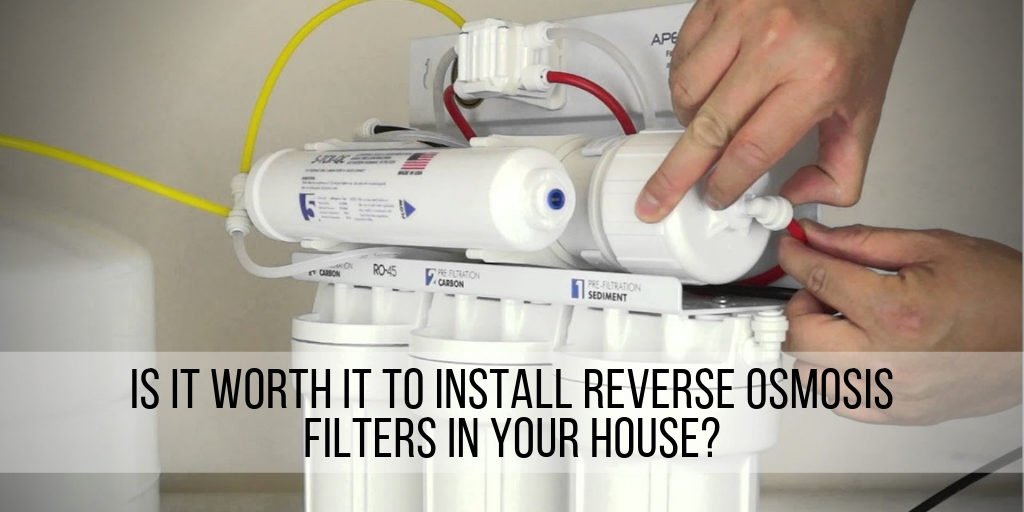
Many homeowners wonder if it is worthwhile to install reverse osmosis water filters. There are numerous benefits to using these filters in your home that you may not know. Reverse osmosis filters are the most efficient method for making clean drinking water. Because of their design, they are also extremely cost-effective.
How Do Reverse Osmosis Filters Work?
Reverse osmosis filters use the water pressure in your home to push water through a semi-permeable membrane. This natural process reverses the flow of the water, so it goes from more concentrated on one side to less concentrated on the filtered side. The membrane’s pores are an extremely small 0.0001 microns, and the filters are designed to allow water molecules to slip through while trapping contaminants, like unwanted chemicals.
Some common impurities include salt, lead, and copper. Reverse osmosis filters can also reduce fluoride, arsenic, calcium, sulfate, phosphorus, potassium, and various heavy metals. Many of these impurities do not just affect the taste of your drinking water. Some, like lead, also can be especially dangerous to your family’s health. With these filters, 99 percent of these impurities are removed from your water supply.
Reverse osmosis is also highly effective in removing biological contaminants. Numerous protozoa can live in drinking water, including giardia. It also removes bacteria that can pose a threat to your family’s health. This process removes E. coli and salmonella, among other dangerous microbes. It also eliminates potentially dangerous viruses, such as hepatitis A, norovirus, and rotavirus.
What Are the Benefits of Reverse Osmosis Over Other Methods?
These filters have numerous benefits over other water purification methods. Below are some comparisons:
- Reverse osmosis is more effective than microfiltration at removing bacteria and viruses. While microfiltration effectively removes protozoa, its average 0.1-micron pore size is too large to filter out harmful microbes. It is also ineffective in removing harmful chemicals.
- While ultraviolet treatments with pre-filtration effectively eliminate bacteria, protozoa, and viruses, they are ineffective at removing chemicals from drinking water.
- Ultrafiltration systems can very effectively remove protozoa and bacteria. This is because these systems use a pore size of about 0.01 micron on average. However, they are only somewhat effective at removing viruses and are not able to efficiently remove harmful chemicals.
- Nanofiltration systems use an average 0.001-micron pore size. Therefore, they are highly effective at removing bacteria, viruses, and protozoa from drinking water. However, they are only somewhat effective in removing harmful chemicals.
- Water softeners can be used to remove unwanted chemicals, reduce water hardness from calcium or magnesium, and remove heavy metals. They can also be used to remove radioactivity from water. However, unlike reverse osmosis filters, water softeners provide no protection from dangerous bacteria, viruses, or protozoa.
Reverse Osmosis Filters for Your Home
Reverse osmosis filters are the most effective tool for protecting your family’s drinking water. Installing these filters in your house is the best way to eliminate harmful chemicals, bacteria, protozoa, viruses, and heavy metals.
